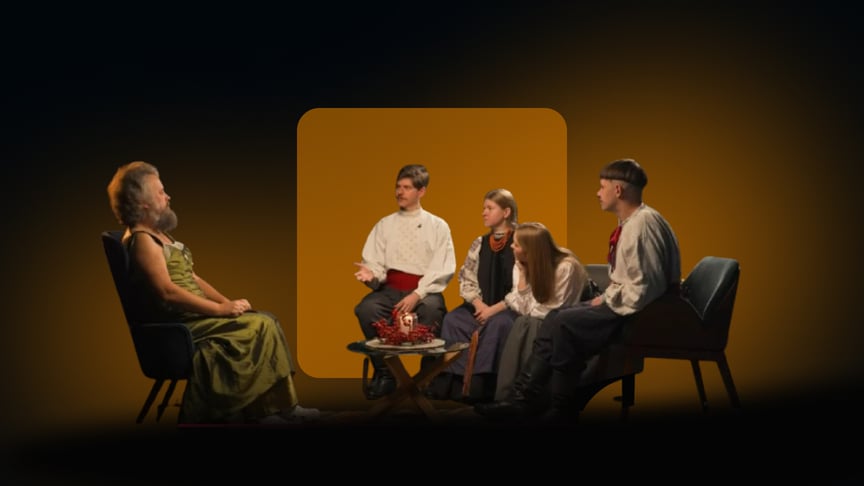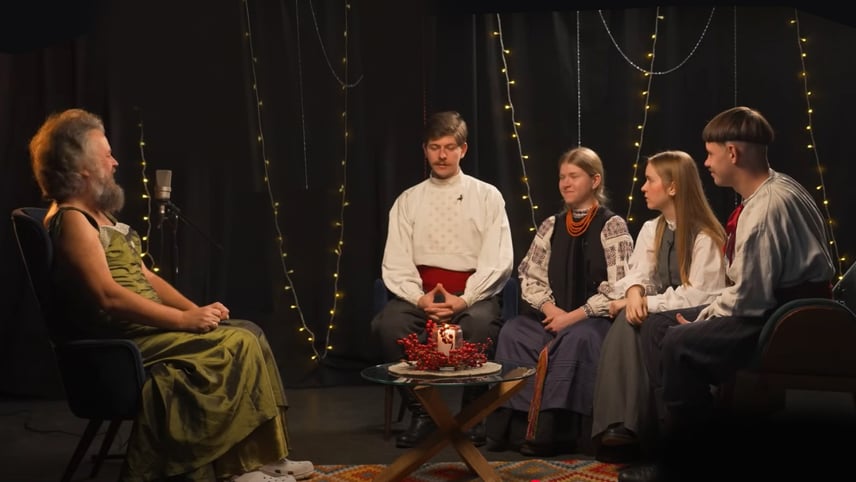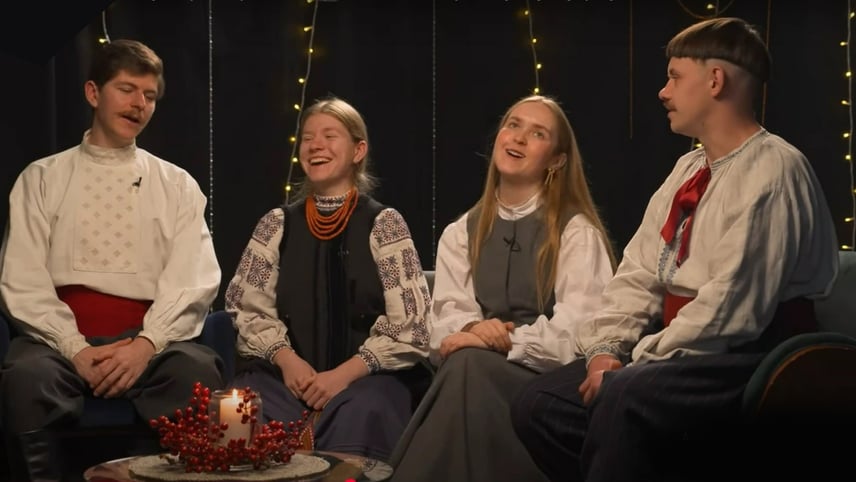"If you truly believe in it, it works." "ShchukaRyba" discusses caroling, Christmas, and folklore in pop music.

About Christmas
During this time, we become very close to one another, engaging in many interesting and sometimes even artistic activities. It's not always about making money, although this year we've been inundated with requests because everyone wants carolers.
We've been part of this process for quite a while. We don't just say, "Here's a tradition; we'll show it to you and go home." We genuinely live it. Every year, we eagerly anticipate Christmas. It's one of the busiest times of the year. There’s a significant demand, especially now.
For us, Christmas is closely tied to caroling. For instance, when we weren't as popular (two years ago), there were days in January when we weren't caroling with a group, but we would gather colleagues living nearby and sing carols. We would visit homes in the villages, showcasing the goat and Malanka. We simply found it interesting and enjoyable.
It's especially rewarding when we receive positive feedback from people who are aware of these traditions and understand them. Elderly individuals often say, "It hasn't been like this for 50 years; I remember it from childhood, but then it all disappeared."
On Religious Meaning, Tradition, and Love
We are all Christians, and this is deeply rooted in our families. For the most part, it's at the level of habit. All these beliefs about Jesus Christ, the first star, the 12 dishes. Although now we are digging deeper and realizing that some aspects of the tradition have changed and can be modified. It's important that we do not live in the 19th century. Many want to impose conservation on us. But it's truly essential to integrate this in a way that suits us in the 21st century.
Religion is undoubtedly an essential cultural component. It can be challenging to explain that pre-Christian beliefs are also present in this context. Some people are very conservative in these views. However, nothing prevents one from existing alongside the other. It's possible to successfully combine and understand the deeper meaning. Because this history is truly remarkable, especially its continuity.
Christmas is not just about religious or church matters; it’s more about an internal spiritual journey, where you share your love and exchange it with others. In this context, perceiving God as love is very harmonious and logical.

On Greetings
Some carols are addressed specifically to the hosts, hostesses, and children. People believed in these greetings because they needed to receive such wishes, as their well-being and success in the new year depended on them. Essentially, it was about survival because what was wished for was the survival and prosperity of people.
Carols and greetings always exist in an unrealistic world, where the host and their household resemble noble estates filled with gold, silver, and so on. This hyperbolized depiction of the world, with its desires, implied that it would bring all possible wealth in the coming year.
If we consider the mindset of those people when the magical element prevailed, if you believe strongly in it, it works. It's unfortunate that the world has diminished this now. But at the same time, it's wonderful that people have gathered with their families and friends, with many carolers, creating a strong and powerful energy in this community.
Carolers played the role of ancestors in the worldview, coming into homes to congratulate their relatives. Therefore, hosts were expected to reciprocate with gifts. This has led to a distorted perception that carolers earn money. But it’s a reciprocal process.

On Ethnic Elements in Modern Pop Songs
The main criterion is how well you understand what you are doing and how you feel about it. Understanding the material itself is crucial. If you approach this with understanding and context, it becomes a positive phenomenon that allows you to convey more about folklore to those who might not be ready to listen to it in its original form (as it is a rather specific genre for contemporary listeners). Then it's fantastic. However, if it’s just for the sake of using it—then that’s not acceptable.
As time goes on, we have fewer internal biases about this. Therefore, the more this topic is discussed, the more visibility it gains, and people will dive deeper. This was one of our goals. We created the project "Carols at Kudryavka," which features collaborations with various artists. The aim was to engage a broader audience, including Velboy, Dantes, and Jamala. Folklorists are often associated with grandmothers and grandfathers, but in reality, it’s about young people; it’s about us.
I really admire how Gordiy Starukh has brought attention to folklore, but I’m not fond of general collaborations as they tend to be a bit simplistic.
I dislike what Kozak Syromak is doing because he perpetuates many myths, particularly about Cossack culture, and sometimes says outright nonsense. He simply lacks someone on his team who can be an expert in this area, who can advise on clothing and what to say.
As for everything else, I don’t even want to comment. What they do, like "how are you, Cossack," should be approached with a great deal of irony.